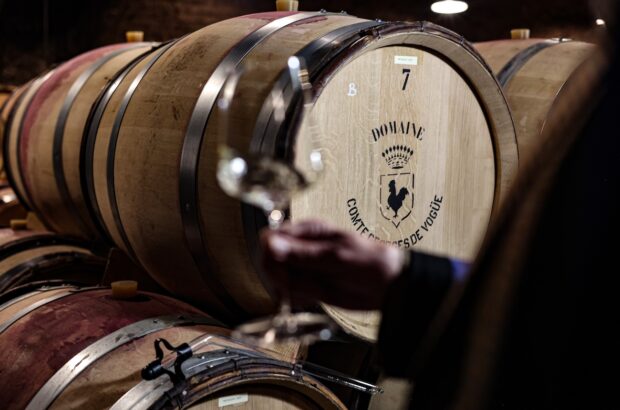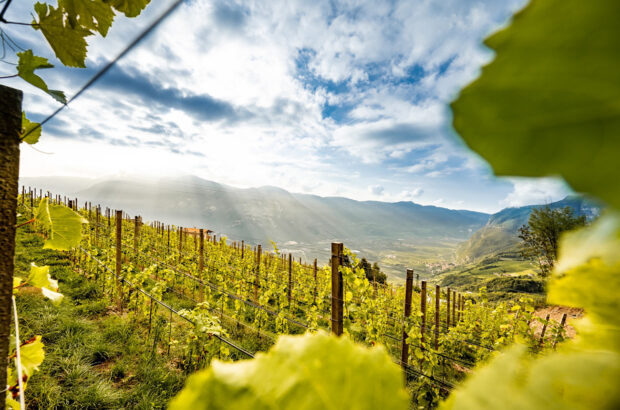What is vermouth?
The unsung hero of many classic cocktails, vermouth is an aromatised fortified wine. It can be traced back to ancient Chinese, Indian and Greek civilisations, which commonly infused botanicals in their wines – often for medicinal purposes.
Wormwood was a popular ingredient in these infusions; an intensely bitter plant that was thought to cure stomach ailments. It was the German word for wormwood – wermut – that gave its name to vermouth.
Through the years vermouth transformed from a medicinal tonic into an enjoyable libation. Italy’s Piedmont and France’s Savoie regions became the heart of production, thanks to their Alpine terrain, rich in wormwood and other botanicals.
Recipes for vermouth can be found from the 16th and 17th centuries. However it wasn’t until the 18th century that the modern version of the drink appeared, in the Italian city of Turin. It soon became popular as a fashionable apéritif across Europe.
Vermouth’s star rose even higher in the late 19th century, when bartenders began to use it as a key ingredient in the popular new mixed drinks of the day: cocktails. Over time vermouth became a key ingredient in classics such as the Negroni, Manhattan, Americano and Martini.
The recent resurgence of cocktail culture – particularly the popularity of the Negroni – has introduced vermouth to a whole new generation of drinkers. Add in new products from Spain, the US and UK, as well as France and Italy; plus lighter serves that tap into modern drinking trends, and vermouth is a must-have for any home bar.
How is it made?
Vermouth is made from a base of neutral, low-alcohol wine or unfermented grape must, using varieties such as Piquepoul, Clairette Blanche, Trebbiano and Catarratto. Producers fortify this base with neutral spirit and flavour it with various botanicals.
A botanical is any plant-based substance, including herbs, spices, flowers, roots, bark and leaves. The list of vermouth botanicals will be familiar to gin lovers; including juniper, citrus peel, cardamom, cloves, cinnamon, coriander, chamomile and ginger. Despite the origins of its name vermouth doesn’t have to include wormwood.
The particular mix of botanicals creates each vermouth’s signature taste and aroma. So producers keep their recipe a closely guarded secret. After the wine is fortified and infused with botanicals, the vermouth can be sweetened with sugar.
Different styles
Historically, there were two main types of vermouth: sweet red or dry white. Today the selection is more sophisticated and the range of styles includes extra-dry white, sweet white (bianco, blanc), red (rosso, rouge, roux), amber (ambrato, ambre) and rosé. Sweet vermouths generally contain 90-130g/l of sugar, while dry vermouths won’t exceed 50g/l and tend to have a lighter texture than sweet styles.
How to serve and store vermouth
Vermouth can be enjoyed on its own over ice as an apéritif or in a longer drink mixed with soda water or tonic. As the average abv of vermouth is 16%-18% it’s a low-alcohol alternative to serves such as a G&T or vodka and tonic. White, amber and rosé vermouths should be served chilled at 12°C-14°C, while red vermouth is best served at 16°C.
Vermouth is also used as a cocktail ingredient. Popular serves include the Negroni, a mix of equal parts sweet red vermouth, gin and Campari; though you can also make a lighter White Negroni (invented in 2001 by British bartender Wayne Collins) using gin, Lillet Blanc and Suze gentian liqueur.
The whisky-based Manhattan also calls for sweet red vermouth, as does the Boulevardier: a blend of bourbon, vermouth and Campari. Or try an Americano, a thirst quenching blend of Campari, vermouth and soda water.
Meanwhile Martinis are made with dry white vermouth. Confusingly a ‘dry’ Martini is made with less dry vermouth and a ‘wet’ Martini with more dry vermouth. While a ‘perfect’ Martini is made with equal parts dry and sweet white vermouths. Exactly which vermouth to use is down to personal taste and your style of Martini: Gin or Vodka, a Dirty Martini, Vesper or Gibson. See below for some suggestions…
Because it is a fortified wine, an open bottle will keep for much longer than regular wine. But unlike spirits, an opened bottle of vermouth will gradually oxidise and deteriorate over time. So pop your open bottle in the fridge and it will keep for up to three months.
Best vermouths to try
Antica Formula Carpano Vermouth
Antonio Benedetto Carpano created the recipe for Antica in 1786. It’s a traditional Vermouth di Torino, made using a base of Italian grapes from Romania, Puglia and Sicily with botanicals including saffron and vanilla. With its aromas of dark chocolate, vanilla, bitter cherries and orange peel, plus chocolate orange, spice and coffee on the palate, it partners perfectly with bourbon to make a cracking Manhattan. Antica Formula was also the original vermouth used to create the Martinez cocktail. Alc 16.5%
Azaline Vermouth Saffron Roux
This characterful French vermouth is infused with Persian saffron for a distinctive take on the dry red style. It’s made by Burgundy wine producer Gabriel Boudier, using Pinot Noir as a base wine. With botanicals including cardamom, juniper and tarragon, it’s a darkly spicy vermouth, dominated by saffron aromas and flavours, with raspberry and black cherry fruit. Crisp and dry, with a lingering finish laced that’s with oriental spice and bitter cherry. Enjoy it as a spritz with soda water and a slice of orange or use it in a Saffron Negroni. Alc 17%
Cocchi Storico Vermouth di Torino
The best-selling vermouth, according to Drinks International’s Brands Report 2020 – and deservedly so. First produced in 1891, Cocchi is made with a base of Moscato grapes from Asti and a botanical recipe that includes quinine, star anise and achillea. Amber coloured thanks to the addition of burnt sugar, there’s great intensity on the palate: rich and luscious with bitter orange, cocoa, spices and whiff of smoke. Equally happy in a Negroni or a Manhattan. Alc 16%
Cucielo Bianco Vermouth di Torino
One of the new generation of Vermouths di Torino, made with respect for the traditional style, but with a focus on using sustainably sourced botanicals and packaging. Alongside a clove-laced Rosso, this Bianco uses a base of Trebbiano, Grillo and Ansonica grapes, with botanicals including wormwood, green apple, cardamom, pink pepper and elderflower. Very herbaceous and floral, with a distinct note of dried thyme and ripe peachy fruit on the palate. Lovely with tonic or try a Cucielo Cinque 7, with Prosecco, Angostura bitters and soda water. Alc 16.8%
Dolin Vermouth de Chambéry Dry
Producing vermouth since 1821, Dolin is the only remaining independent vermouth producer left in Chambéry, which is the only French region that has a DOC for its vermouths. Made using Alpine botanicals including wormwood, brooklime, rose and verbena, the range also includes sweeter blanc and rouge styles. Dolin Dry boasts citrus freshness, grape and lychee sweetness, dry herbal notes and some lip-smakcing salinity. Use equal parts Dry and Blanc to create a Perfect Gin Martini. Alc 17.5%
El Bandarra Al Fresco
El Bandarra Spanish vermouths hail from Barcelona and are made using Spanish grapes Garnacha and Xarel-lo, plus Mediterranean botanicals. The cool typography bottle is inspired by the tradition of hand-painting the names of dishes onto the windows of tapas bars. The range includes a Blanco and Rojo but the vibrant Al Fresco, with its bright cherry and red berry fruit, grapefruit citrus freshness and herbal bitterness is our favourite. Pair it with tonic (one part vermouth and two parts tonic) for a refreshing summer cooler that will appeal to fans of the Aperol Spritz. Alc 14.5%
Martini Riserva Speciale Rubino
The Martini brand traces its roots back to 1847. Its Rosso and Bianco are dependable big sellers, but this top-of-the-range Riserva Speciale Rubino Vermouth di Torino was introduced in 2015 and makes a knock-out Negroni. Base wines from Piedmont and small parcels of Langhe DOC Nebbiolo, are selected by Martini’s master blender, Beppe Musso, and infused with exotic botanicals including African red sandalwood, holy thistle and three different types of wormwood. Alc 18%
Noilly Prat Original Dry
The classic dry French vermouth, produced in Marseillan since 1843. Made from two base wines (Picpoul de Pinet and Clairette) which are left to age separately in barrels in the open air for a year, imparting an amber colour to the final vermouth. The botanical recipe includes bitter orange peel, nutmeg, chamomile, cloves, coriander and yellow gentian. Very herbal and peppery on the palate, with piney freshness that lifts a Dry Martini beautifully. Noilly Prat Ambre is harder to find, but well worth seeking out. Alc 18%







